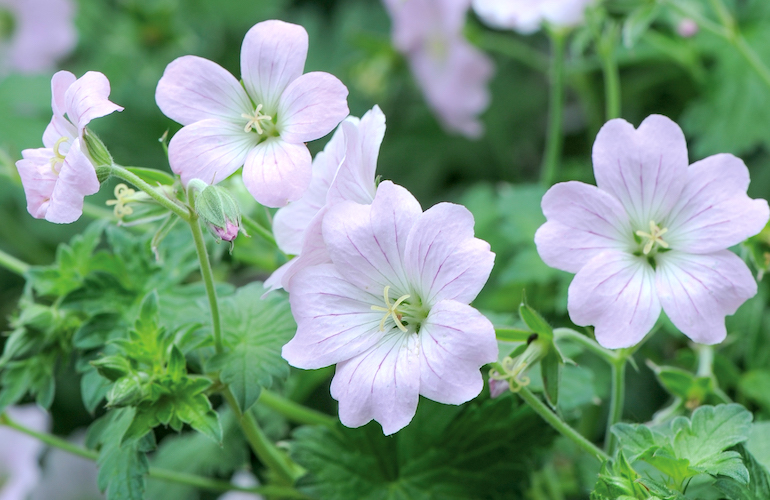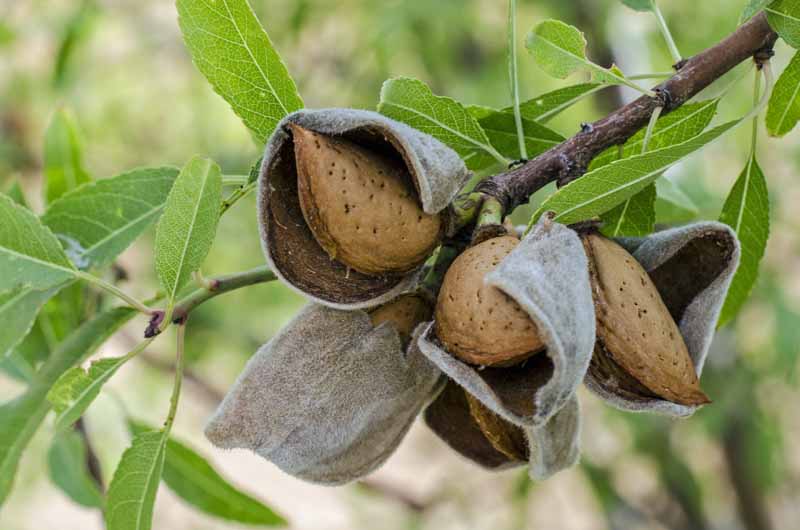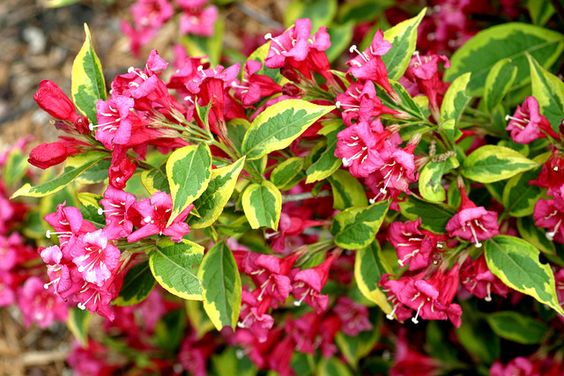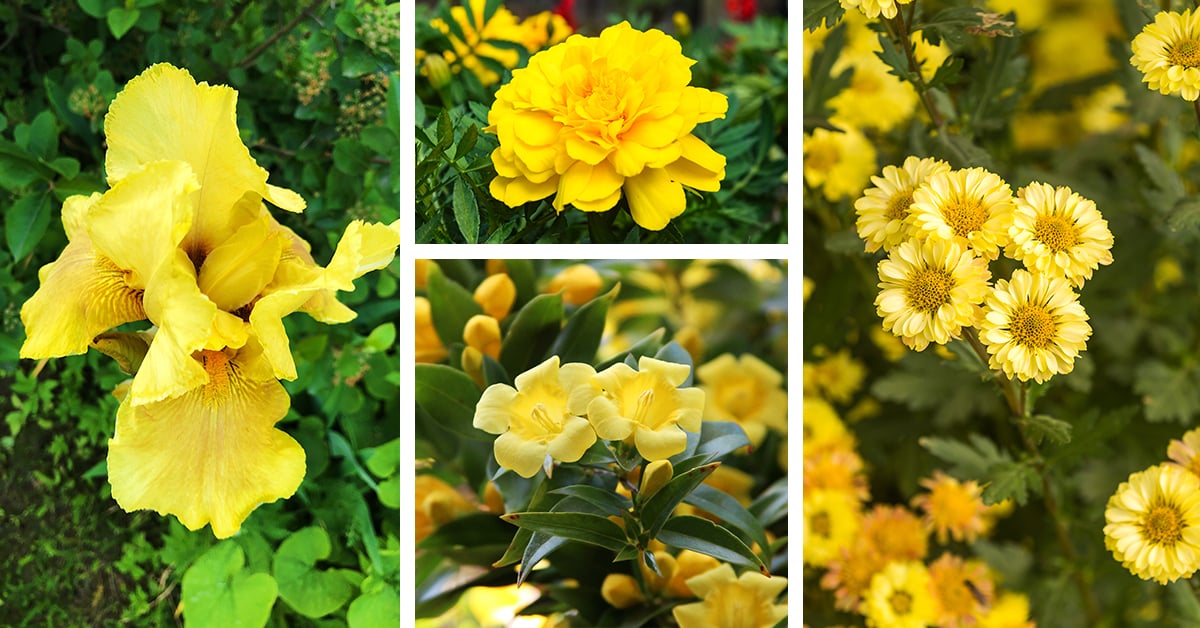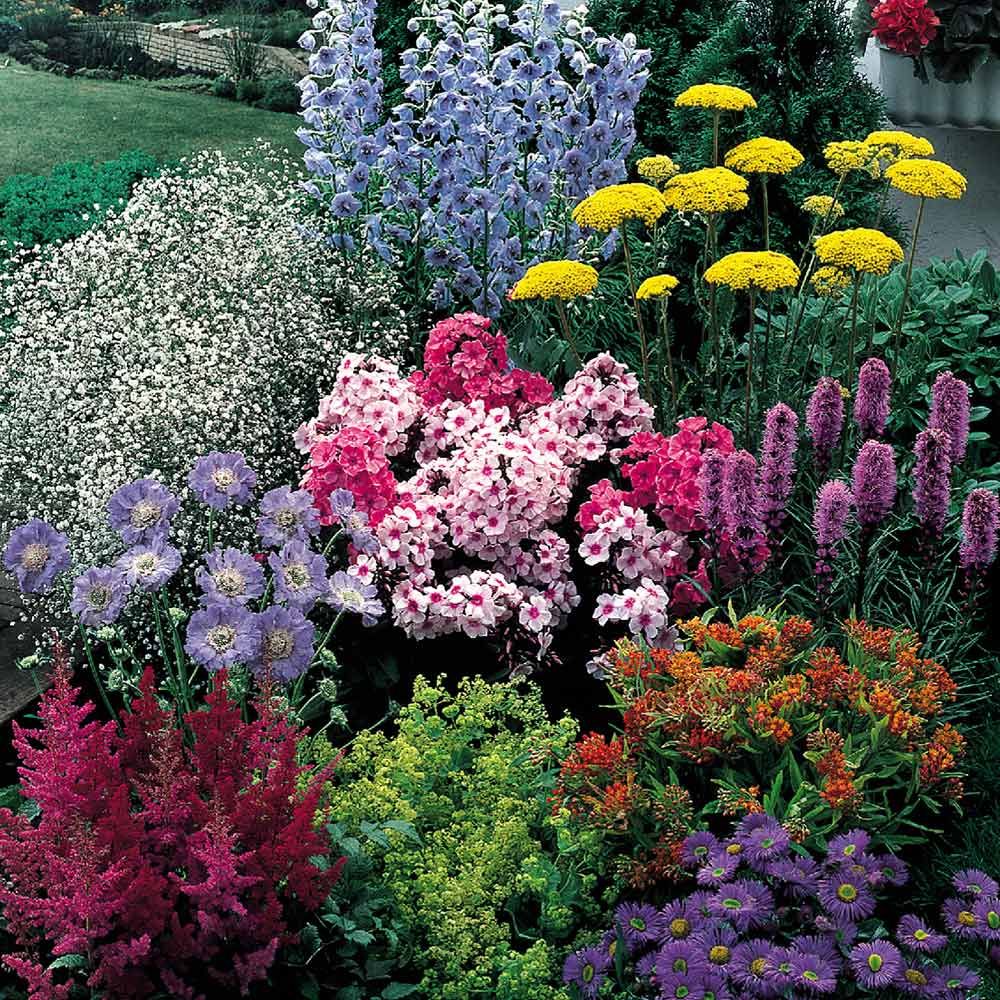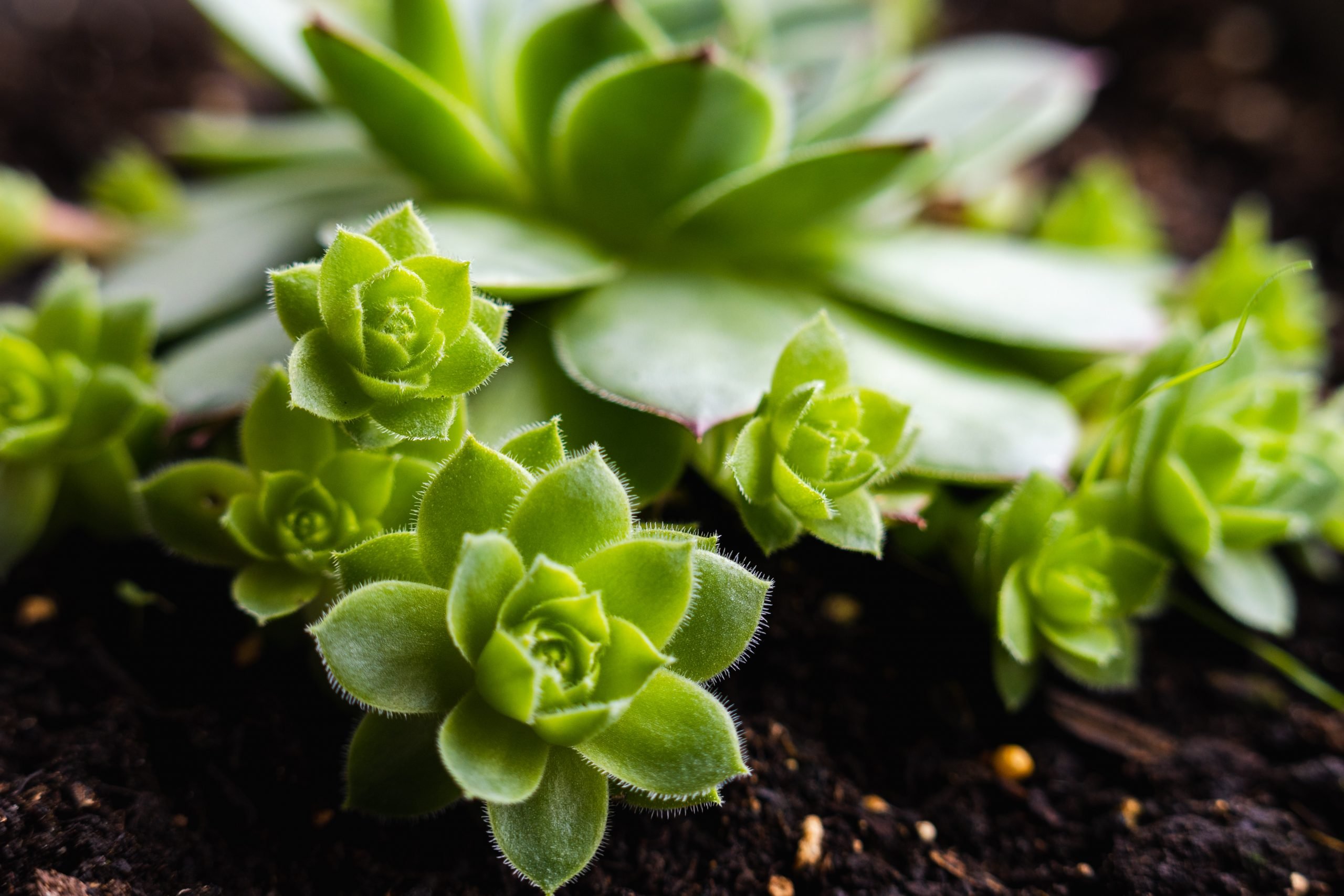20 Late-Blooming Perennials to Brighten Up Your Autumn Garden
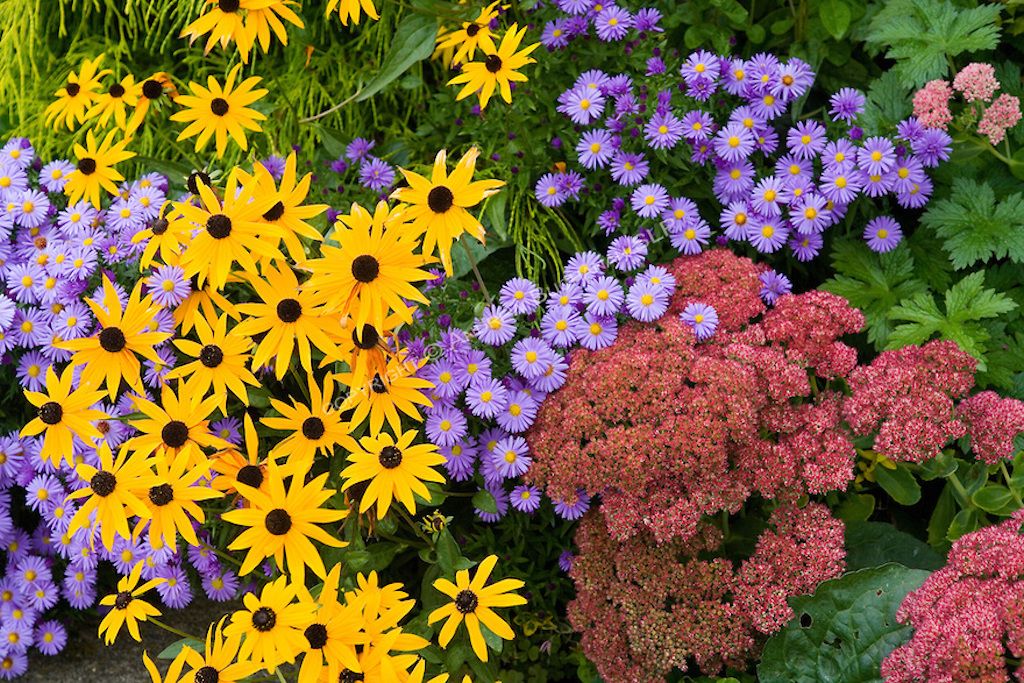
Table of Contents
The autumn season is the best time of year to grow flowers because of the lush, deep colours of the gardens and the pleasant weather. And what could be better than enhancing your landscape with some lovely plants that bloom in the autumn? Long after other summer blooms have finished, perennial flowers are the ideal method to extend the blooming season until late autumn.
Japanese Anemone, Autumn crocus, Dahlia, Rudbeckia, Fuchsia, Mums, Salvia, Scabiosa, Hesperantha coccinea, Helenium, Nerine, Shasta Daisy, Cobaea scandens, Chelone lyonii, Echinacea, Abelia, and Coreopsis genus are a few are the top from category.
Autumn-flowering perennials not only make your garden more attractive, but they also provide habitats for pollinators who are struggling to obtain food during this time.
1. Japanese Anemone
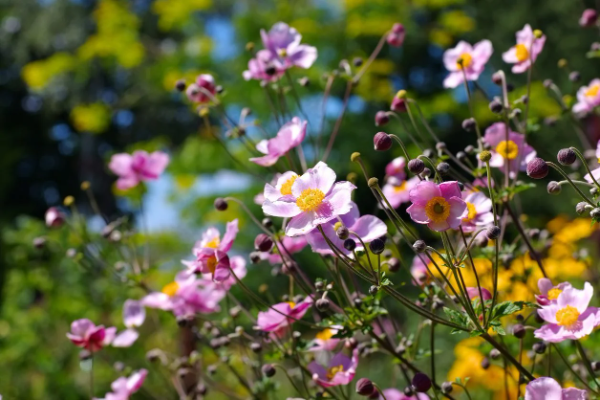
Japanese Anemone flower adds elegance to any garden with its delicate pink petals
A green-to-yellow stamen lends further appeal to the wonderful glossy saucer-shaped flowers that Japanese anemone creates. The petals range in colour from white to light creamy pink. These flowers are in bloom from the summer until autumn. They can’t handle dry soil for an extended period of time. Thus, well-drained soil is preferable for growing them. While planting, you can also add some compost or manure.
| Kingdom | Plantae |
| Family | Ranunculaceae |
| Genus | Anemone |
| Scientific name | Anemone hupehensis |
| Common names | Japanese thimbleweed, Windflowers |
| Flowering Season | August to October |
| Colour variations | White petals, Pale pink, Creamy pink |
2. Autumn Crocus
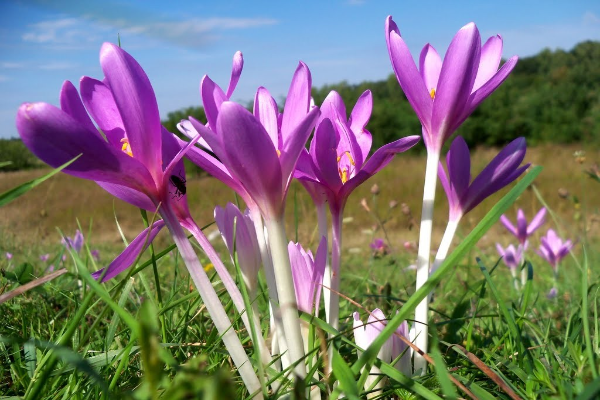
Interesting, vibrant purple blooms of Autumn Crocus steal the show
These adorable flowering crocus provide your landscape with the much-needed colour it needs in the autumn. It resembles springtime blooms and is a member of the lily family. Autumn crocus are delicate and require careful attention. Basically, these are one-foot tall small plants. For this flower, the soil should be moderately moist to well-drained. Nevertheless, fall crocus comes in a wide variety based on colour differences.
| Kingdom | Plantae |
| Family | Iridaceae |
| Genus | Crocus |
| Scientific name | Colchicum autumnale |
| Common names | Autumn Queen, Naked ladies |
| Flowering Season | September to December |
| Colour variations | Pink, Purple, White, Yellow |
3. Dahlia
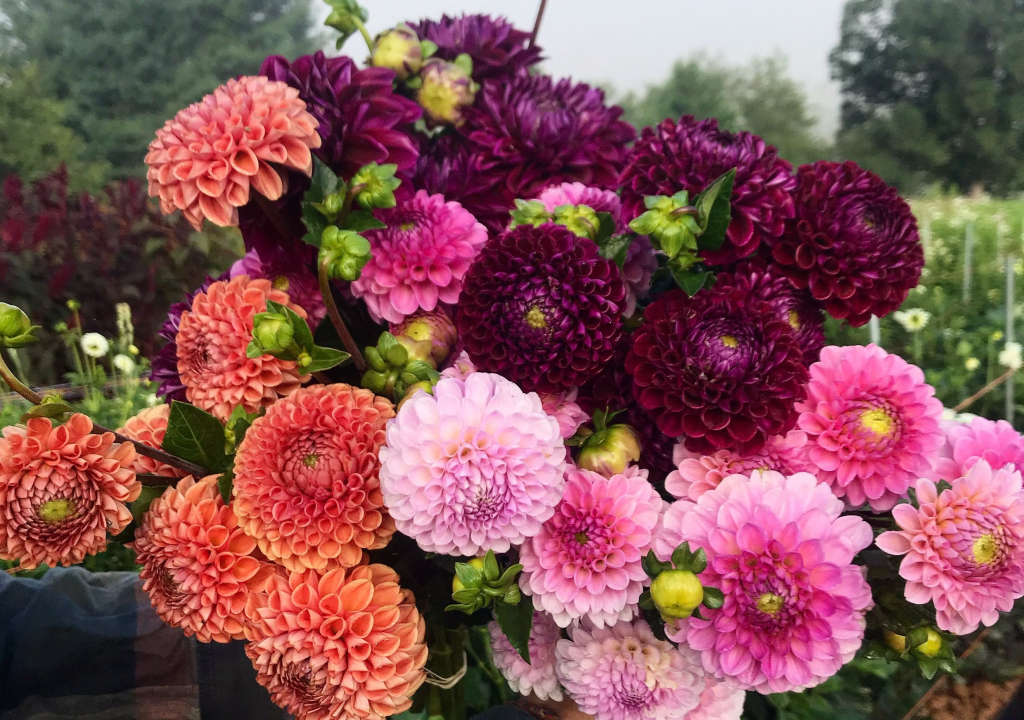
Dahlia’s dramatic presence cannot be overstated – their large, bold flowers impact any garden space.
| Kingdom | Plantae |
| Family | Asteraceae |
| Genus | Dahlia |
| Scientific name | Dahlia spp |
| Common names | Dahlia Flower |
| Flowering Season | Summer, fall |
| Colour variations | Pink, Purple, Light Gold, White, Yellow, Orange, Red |
Dahlias come in a variety of sizes, hues, and patterns, and they begin to bloom around the middle of the summer. You may plant these vibrant blossoms in your garden. They can be sown from either a seed or a plant. It is known that they thrive in tropical climates and are poisonous to both pets and animals. However, these gorgeous, vibrant flowers are quite simple to grow.
4. Rudbeckia
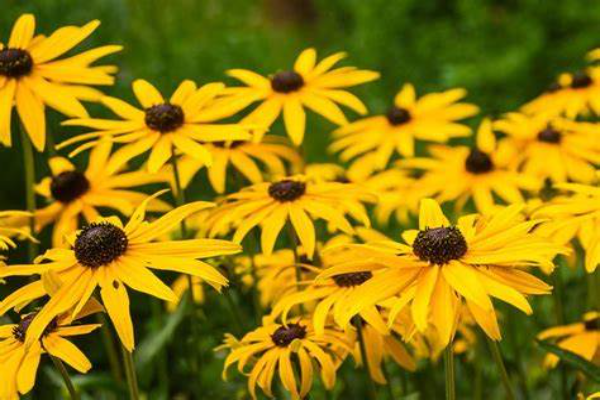
Rudbeckia boasts bright yellow and gold colours that bring sunshine to even the gloomiest days.
| Kingdom | Plantae |
| Family | Asteraceae |
| Genus | Rudbeckia |
| Scientific name | Rudbeckia hirta |
| Common names | Gold Strum, Black-Eyed Susan |
| Flowering Season | August to October |
| Colour variations | Yellow, Marron, Red, Orange |
Get hold of some Black-eyed Susans, which are easy to grow, if you want to add a touch of yellow to your yard. It has thick petals that are yellow in colour, and the centre is brown. It increases the number of large-stemmed blooms that bloom and draws bees and other insects to your garden. In the Midwest, it is typical for this wildflower to thrive along roadside ditches.
5. Fuchsia
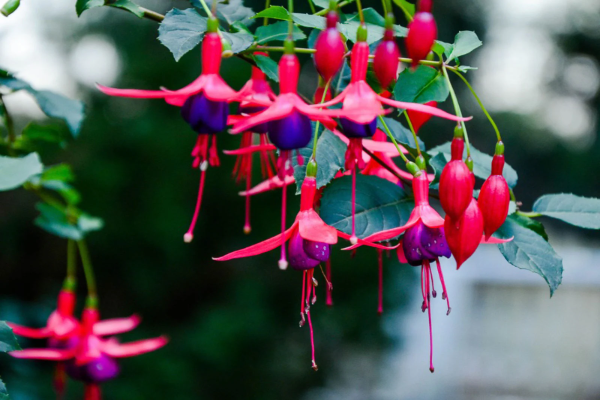
Fuchsia is known for its whimsical appearance, but it also catches our attention due to how long it blooms throughout the autumn months without fail.
| Kingdom | Plantae |
| Family | Onagraceae |
| Genus | Fuchsia |
| Scientific name | Fuchsia |
| Common names | Lady Boothby, Mrs Popple |
| Flowering Season | June – October |
| Colour variations | Red, pink, white, violet, purple |
Fuchsia is essentially a brightly coloured teardrop or dangle form. They are utilized as ornaments or in baskets and are quite wonderful due to their appealing shape. They draw hummingbirds, which are fascinating to see with the human eye. Due to their main point, these blooms are also known as Lady Boothby flowers. These plants are believed to thrive well in containers but are delicate to cold.
6. Mums
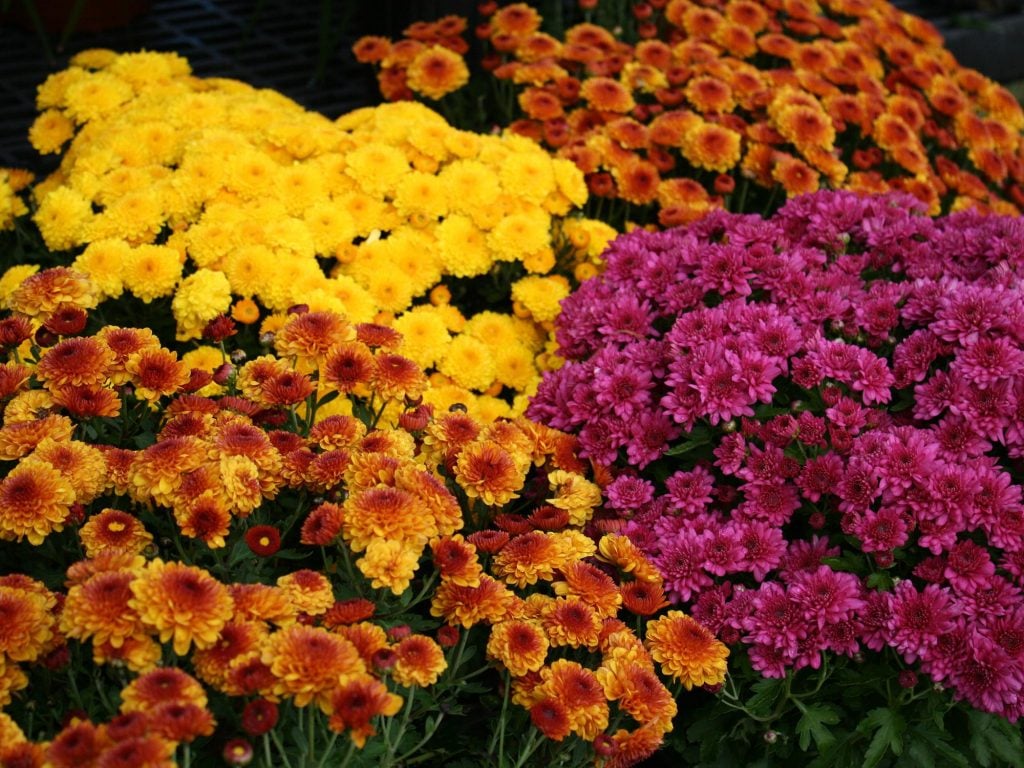
Beautiful Mums are synonymous with fall florals. These colourful flowers come in a different range of colours, from muted tones to spectacular colours.
| Kingdom | Plantae |
| Family | Asteraceae |
| Genus | Chrysanthemum |
| Scientific name | Chrysanthemum indicum |
| Common names | Garden mum, Carden chrysanthemum, Mum, Hardy mum, |
| Flowering Season | Summer and Fall |
| Colour variations | Yellow, Red, white, Purple, Pink, and Gold shades |
Mums, a popular name for chrysanthemums, come in more than 200 different species. This spring, it is ideal for planting these in your garden. However, the bloom time can change according to the variety and the weather. Mum gardens should receive the proper amount of sunshine and water to bloom well. To keep the roots warm in the chilly weather, make a mulch.
Buying many potted mums for fall landscape decorations will ensure that you have continuous blooming with vibrant colours throughout the entire season if you are going to add mums to your garden this year. You may choose from a variety of mum kinds when purchasing potted mums.
7. Salvia
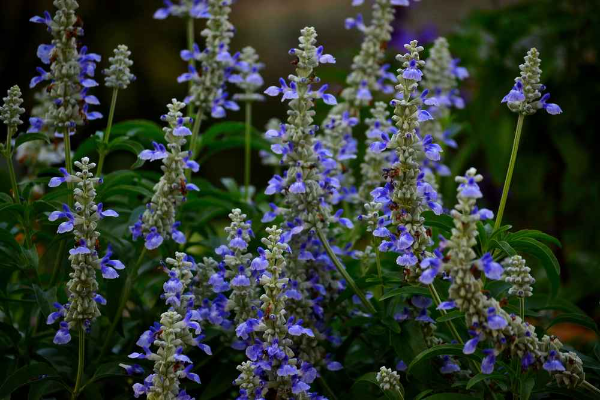
Salvia has slender stalks with vivid violet spikes; they provide striking backdrops beside other larger blossoms.
| Kingdom | Plantae |
| Family | Lamiaceae |
| Genus | Salvia |
| Scientific name | Salvia Sylvestris |
| Common names | May night, May night wood sage, Meadow sage |
| Flowering Season | May to End of September |
| Colour variations | Deep Purple |
A diverse collection of plants known as salvia can withstand all environmental conditions. This gorgeous deep purple bloom is a must-have for your garden’s border. This plant, also called “May Night,” is a member of the mint family. In full sunlight, these plants develop the quickest. Plant them in the early summer to take advantage of the gorgeous blossoms.
8. Pincushion Flowers
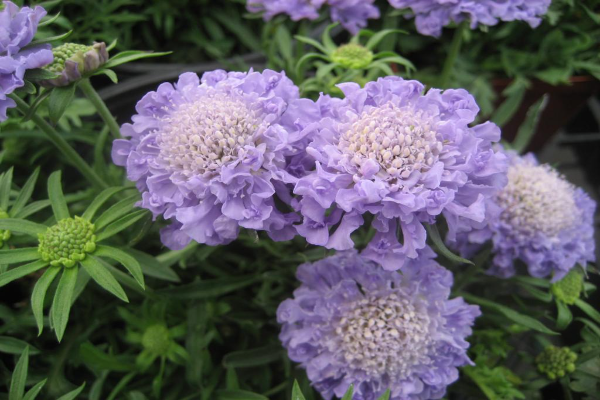
Scabiosa gives long-lasting blossoms from summer into late, which makes them ideal for ensuring longer blooming periods across various seasons.
| Kingdom | Plantae |
| Family | Caprifoliaceae |
| Genus | Scabiosa |
| Scientific name | Scabiosa columbaria |
| Common names | Scabiosa, pincushion, Snowy blossoms |
| Flowering Season | May |
| Colour variations | White, Pink, Lavender, Red, Burgundy |
Large frilly blossoms called pincushion flowers have a central disc and draw hogs to your garden. These fascinating little blooms can be produced easily and come in a wide range of colours. Basically, these blooms are white, pink, and light blue. These are the best options for decor and bouquets. These draw a lot of butterflies as well.
9. Crimson Lilly
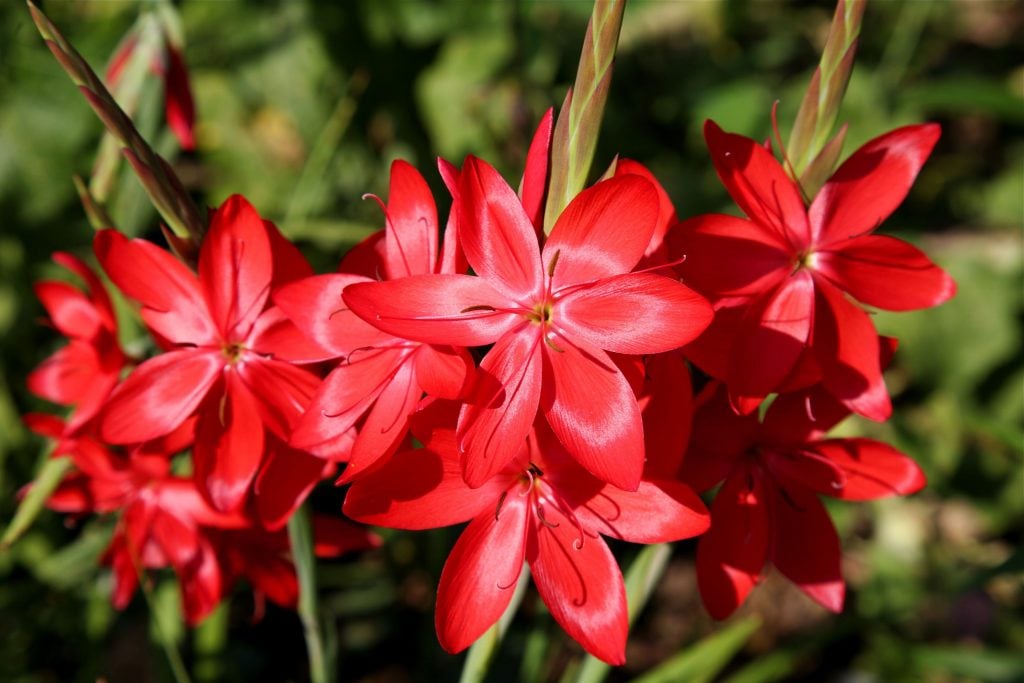
Hesperantha coccinea offers some much-needed colour shifting towards red.
| Kingdom | Plantae |
| Family | Iridaceae |
| Genus | Hesperantha coccinea |
| Scientific name | Hesperantha coccinea |
| Common names | Crimson flag lily, Crimson river lily |
| Flowering Season | September-October |
| Colour variations | Pink, Red, Burgundy |
Small flowers called Hesperantha coccinea are supported by lengthy stems. Due to their sliced patterns, these are also known as Shizostylis and are very common. Given that it blooms at night, it is also known as the evening flower. Plant on sandy soil with full light. Keep the soil moist throughout the hot summer months because the growth can struggle. These flowers make great and durable bouquets.
10. Helenium
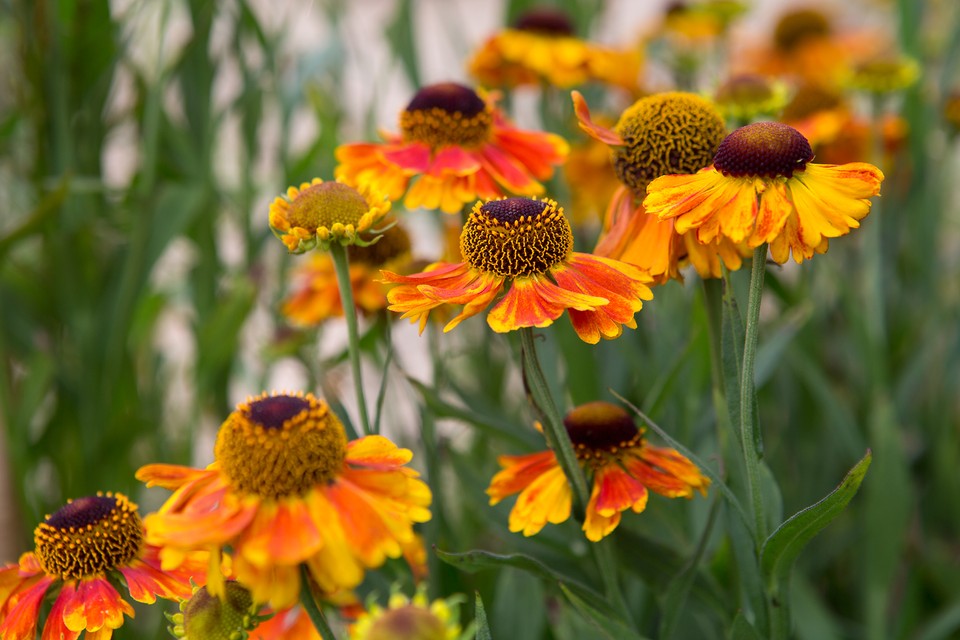
Helenium gives dazzling warmth that, in contrast to its orange-yellow billowing, encapsulates the passing of the days.
| Kingdom | Plantae |
| Family | Asteraceae |
| Genus | Helenium |
| Scientific name | Helenium autumnale |
| Common names | Sneezeweed |
| Flowering Season | May – late fall |
| Colour variations | Red, Yellow, Orange, Gold |
Heleniums attract pollinators and can add vibrant colour to your landscape. They come into bloom with tall grass and dense flowers in tones of red, yellow, and gold. They’re also referred to as sneezeweed. They feature upper-side foliage that is rigid and lance-shaped. They can grow up to 5 feet and grow quite swiftly. These long-lasting cut flowers are perfect for adding to seasonal arrangements.
11. Nerine
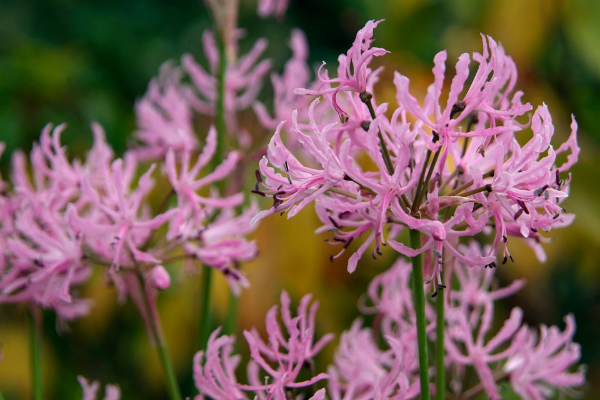
Nerine, with its bright pink colour blooms and dark green stalks, is a hue to your garden this autumn.
| Kingdom | Plantae |
| Family | Amaryllidaceae |
| Genus | Nerine |
| Scientific name | Nerine sarniensis |
| Common names | Bowden lily |
| Flowering Season | August-October |
| Colour variations | Pink, White, Light Purple |
These are indigenous to South Africa and require rich soil that is well-drained. It would be wise to use the bulbs in your garden. If several flowers are planted in the backyard, a dense flowering will be visible. These blossoms, which resemble lily flowers, develop in the spring and continue to grow throughout time. Over the winter, these should be handled with a little more caution.
12. Shasta Daisy
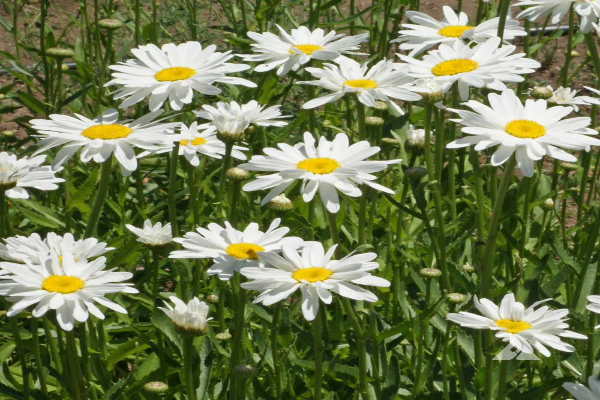
Shasta Daisy, with their large white petals, is a wise choice for adding a burst of white colour to any garden.
| Kingdom | Plantae |
| Family | Asteraceae |
| Genus | Leucanthemum |
| Scientific name | Leucanthemum × superbum |
| Common names | White blooms |
| Flowering Season | July to September |
| Colour variations | White Petals with yellow disk |
There are various wild variants of this cheery white bloom, which was given its name after the Californian peak Shasta. This flower is perennial and is thought to be evergreen. The petal kinds can range from single to double layers, with tall stalks and a disc that is tinted from green to yellow. Butterflies are drawn to these stunning white flowers. These are simple-to-grow plants that produce a steady yield even in medium-fertility soil conditions.
13. Cobaea Scandens
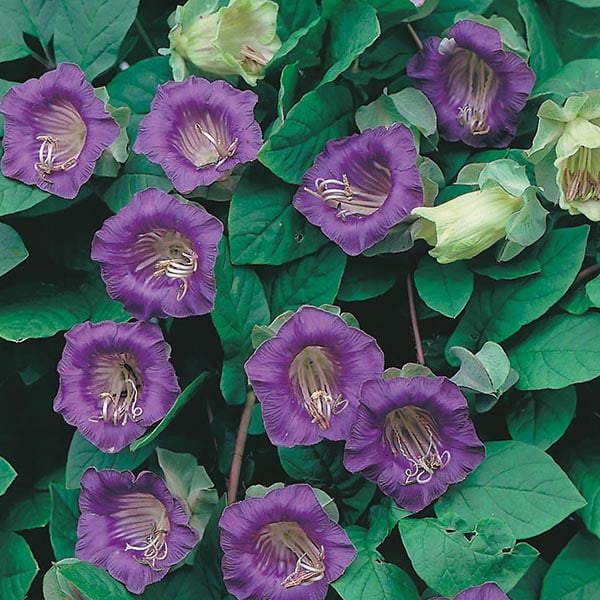
Cobaea scandens, or cup-and-saucer plant, is a beautiful addition known for its unique bell-shaped purple blooms.
| Kingdom | Plantae |
| Family | Polemoniaceae |
| Genus | Cobaea |
| Scientific name | Cobaea scandens |
| Common names | Cup and saucer vine, cathedral bells |
| Flowering Season | July-October |
| Colour variations | Purple |
Fastest-growing native climber, Cobaea scandens, is also known as Cup and Saucer vine because its four walls are covered with thin leaves. These climbers have the quickest rate of growth and can reach lengths of 20 to 40 feet. Cup & Saucer is a distinctive name for a plant whose bell-shaped, mostly purple flowers are the distinguishing feature. Be careful to plant it separately because this expansive plant can easily devour surrounding plants.
14. Chelone Iyonii
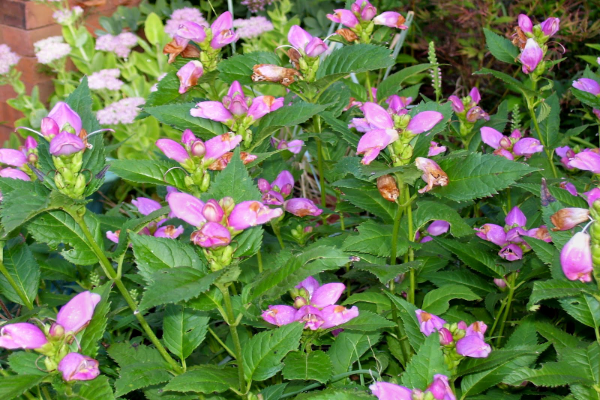
Chelone lyonii, or turtlehead, is a must-have for attracting bees and butterflies. Their vibrant pink flower spikes resemble little turtleheads, making them an adorable accent in your garden.
| Kingdom | Plantae |
| Family | Plantaginaceae |
| Genus | Chelone |
| Scientific name | Chelone obliqua |
| Common names | Turtlehead |
| Flowering Season | Summer, fall |
| Colour variations | Pink, Purple, White |
Due to its shape, Chelone lyonii is also known as Turtlehead. These plants are extremely heat-sensitive. There are many distinct kinds, and depending on the growers and the blooming conditions, the colour and shape will vary. These plants have lovely dark green foliage, which improves the plant’s overall appearance. The plant can also be pruned to draw butterflies and hummingbirds.
15. Echinacea
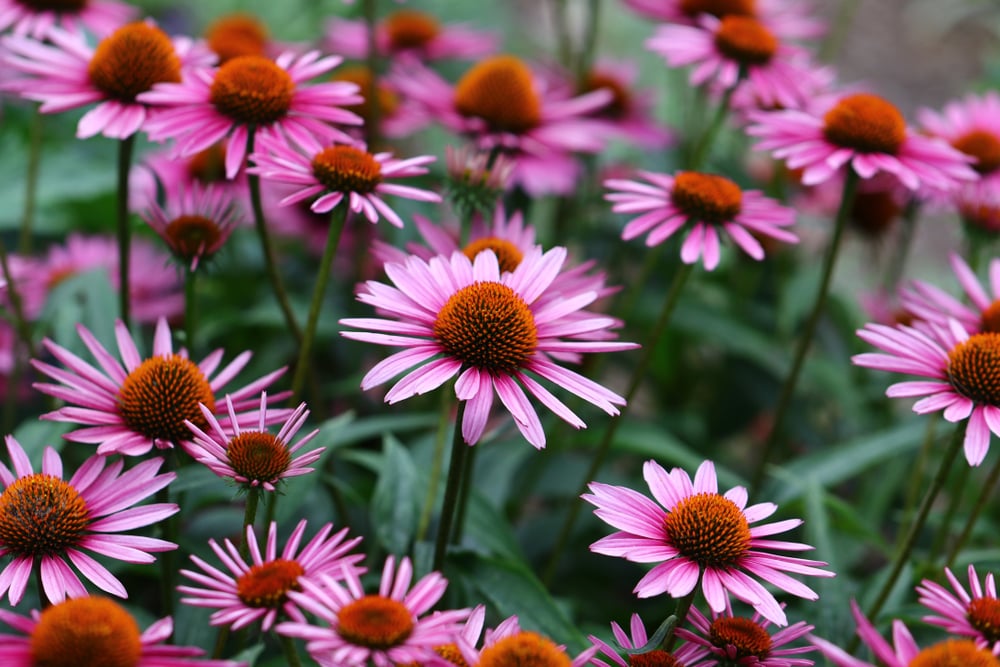
These Coneflower fairy tales come in Orange, Red, White, and Pink colours giving a spectacular look to your garden.
| Kingdom | Plantae |
| Family | Asterales |
| Genus | Echinacea |
| Scientific name | Echinacea Firebird |
| Common names | Coneflowers |
| Flowering Season | June through October |
| Colour variations | Orange, Red, White, Brick Red, Pink |
Due to its central cone shape, echinacea is also known as coneflower. It also goes by the name Firebird. The optimum time to grow them is in the autumn. These can tolerate the full sun and are best kept indoors. In the late summer, they will exhibit vivid colours. The flower is the fastest growing, taking only three weeks to mature. It has the shape of a shuttlecock. The fairy coneflowers are attractive to butterflies, hummingbirds, and rabbits.
16. Abelia
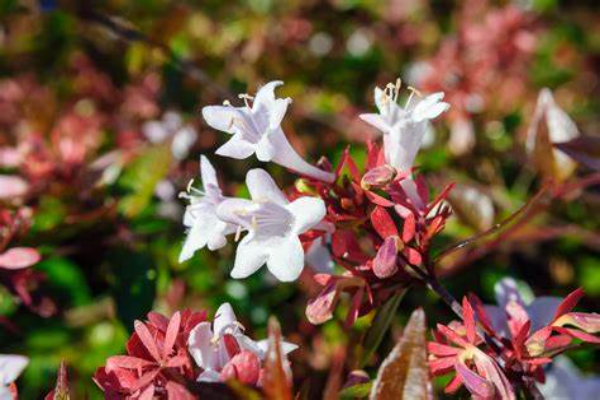
Abelia will add much-needed colour to your garden in the fall season when the leaves turn into beautiful bronze colour.
| Kingdom | Plantae |
| Family | Caprifoliaceae |
| Genus | Linnaea |
| Scientific name | Abelia x grandifolia |
| Common names | Glossy Abelia |
| Flowering Season | June-October |
| Colour variations | White, Pink |
Abelia is shrubs that flourish in semi-warm, protected environments. In the summer, these flowers bloom in a stunning shade of pink. These hybrid plants are Caprifoliaceae members. You can plant these glossy plants in an area that is shielded from the outdoors. Additionally, these flowers have a calming scent that will attract bees and butterflies to your garden. For optimal results, they are planted in moist, well-drained soil.
Conclusion
These autumn flowering perennials that bloom in the autumn are great for bringing late-season colour and charm to your garden.
No matter what kind of temperature or soil conditions you have, there is a wide variety of plants available that are ideal for your garden.
Whether you choose to use wildflowers or shrubs, native or exotic plants, there is sure to be something that lends the perfect finishing touch of autumnal grace and beauty.
So start experimenting right away! By adding these amazing beauties, you can maintain year-round life in your garden.

